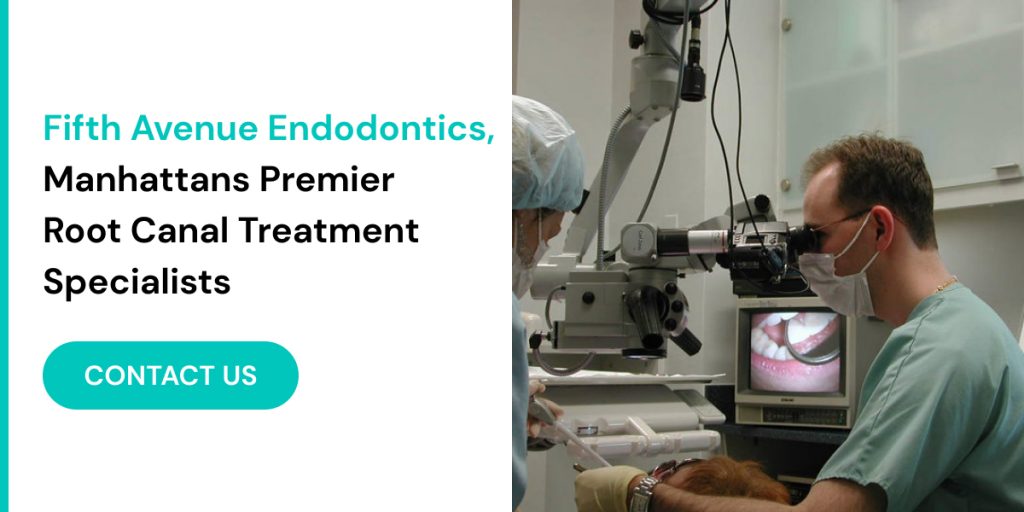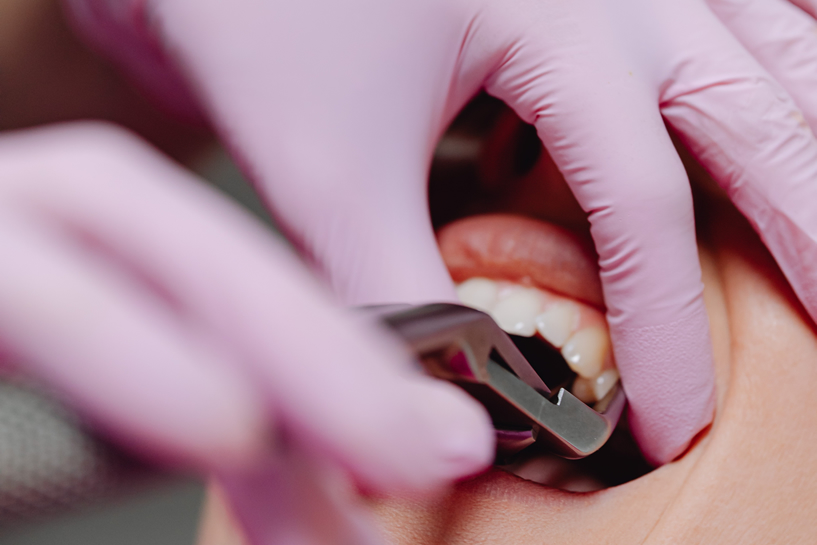A broken tooth can be a distressing experience for anyone, but it can be especially concerning when it happens to a child. Children may not fully understand what has happened, and their distress can be magnified by the pain and fear associated with the injury. As parents, caregivers, or even educators, understanding the unique aspects of broken tooth repair treatment in children is crucial to ensuring they receive the appropriate care and comfort during such an emergency.
At Fifth Avenue Endodontics, led by the experienced Dr. Iofin, we specialize in providing expert care for dental emergencies, including broken teeth in children. Our team is trained to handle the unique challenges presented by pediatric dental injuries, from their initial assessment to the complete repair and follow-up care. We understand that a child’s dental anatomy and their emotional response to dental injuries require a tailored approach.
This article will guide you through the considerations and steps involved in addressing this common yet urgent dental issue, offering insights into the immediate actions to take, the treatment options available, and preventive measures to help safeguard your child’s dental health. Our goal is to empower you with the knowledge needed to navigate these stressful situations and ensure your child receives the best possible care.
Understanding Children’s Dental Anatomy
Children’s teeth, both primary (baby teeth) and permanent teeth, have distinct anatomical and developmental characteristics compared to adult teeth. Recognizing these differences is crucial when it comes to broken tooth repair treatment, as it affects the approach and methods used.
Firstly, children’s teeth have larger pulp chambers, which is the central part of the tooth containing nerves and blood vessels. This larger pulp chamber means that any fracture or damage to the tooth is more likely to expose the pulp, leading to pain and increased risk of infection. In adults, the pulp chamber is smaller and more protected by the surrounding dentin and enamel, making their teeth somewhat more resilient to minor fractures.
Additionally, children’s enamel, the hard outer layer of the tooth, is thinner than that of adults. This thinner enamel provides less protection against fractures and can wear down more quickly, especially in the presence of tooth decay or if the child has a habit of grinding their teeth (bruxism). The thinner enamel also means that the underlying dentin and pulp are more vulnerable to exposure and injury.
Moreover, the presence of developing permanent teeth beneath the primary teeth adds another layer of complexity to the treatment process. Any damage to a primary tooth can potentially affect the underlying permanent tooth, which is still in the process of forming and erupting. For instance, an injury to a primary tooth could disrupt the normal development of the permanent tooth, leading to potential misalignment or developmental defects.
When treating a broken tooth in a child, it’s essential to consider these anatomical differences. Dentists need to be particularly cautious to avoid any procedures that might harm the developing permanent teeth. For example, if a primary tooth needs to be extracted due to severe damage, care must be taken to ensure that the underlying permanent tooth remains unaffected.
Additionally, understanding these differences helps in providing the right kind of reassurance and care to the child. Knowing that their dental anatomy is not just a smaller version of adult teeth, but rather a unique system requiring specialized care, can help parents and caregivers make informed decisions about their child’s dental health.
In summary, children’s dental anatomy involves larger pulp chambers, thinner enamel, and the presence of developing permanent teeth, all of which necessitate a specialized approach to broken tooth repair treatment. At Fifth Avenue Endodontics, Dr. Iofin and our team are adept at navigating these complexities to ensure the best possible outcomes for our young patients.

Common Causes of Broken Teeth in Children
Broken teeth in children can result from a variety of incidents, each presenting unique challenges and considerations for effective treatment. Understanding these common causes can help in both prevention and prompt response when such injuries occur.
- Accidents and Falls
Children are naturally active and curious, which often leads to accidents and falls. Whether it’s during playtime at the playground, participating in sports, or simply running around the house, these activities can result in collisions with hard objects or surfaces. When children fall or hit their mouths, their teeth can easily chip, crack, or break. The impact’s force, combined with the fact that children’s enamel is thinner than that of adults, makes their teeth more vulnerable to damage.
- Tooth Decay
Tooth decay, caused by poor oral hygiene, frequent consumption of sugary foods and drinks, and inadequate dental care, can significantly weaken a child’s tooth structure. Severe decay erodes the enamel and dentin, making the teeth brittle and more susceptible to fractures. When a decayed tooth experiences pressure or impact, it is more likely to break. Regular dental check-ups and good oral hygiene practices are essential to prevent decay and subsequent tooth fractures.
- Biting Hard Objects
Children often explore their world by biting down on various objects, some of which can be too hard for their teeth. Items like ice, hard candies, pens, or even toys can cause a tooth to crack or break. Encouraging children to avoid chewing on hard objects and opting for softer, safer snacks can help mitigate this risk.
- Previous Dental Work
Teeth that have undergone previous dental treatments, such as large fillings or crowns, can be more prone to breaking. The structural integrity of a tooth can be compromised after significant dental work, and these teeth may not be as strong as they once were. For children with a history of extensive dental treatments, extra care and regular monitoring by a dentist are important to ensure the longevity and health of their teeth.
- Sports Injuries
Participation in contact sports or activities without proper protective gear, such as mouthguards, can lead to dental injuries. Sports like football, basketball, or skateboarding carry a higher risk of collisions and falls, which can result in broken teeth. Ensuring that children wear appropriate protective equipment can greatly reduce the likelihood of such injuries.
- Bruxism (Teeth Grinding)
Some children develop a habit of grinding their teeth, known as bruxism. This can occur during the day or while sleeping and can lead to significant wear and tear on the teeth. Over time, the constant pressure can cause teeth to crack or break. Addressing bruxism through dental interventions and behavioral modifications can help protect children’s teeth from this kind of damage.
By understanding these common causes of broken teeth in children, parents and caregivers can take proactive steps to prevent such injuries and ensure that their child’s dental health is maintained. At Fifth Avenue Endodontics, Dr. Iofin and our team are dedicated to providing comprehensive care and education to help keep your child’s smile safe and healthy.
Immediate Steps to Take When a Child Breaks a Tooth
When a child breaks a tooth, quick and appropriate action can make a significant difference in the outcome of the treatment. Timely intervention can help alleviate pain, prevent further damage, and increase the chances of successful repair. Here are the immediate steps to follow:
Stay Calm
Children can become very distressed when they break a tooth, and they will often look to adults for cues on how to react. Staying calm and composed is crucial. Your calm demeanor will help reassure the child and reduce their anxiety. Comfort the child, let them know that they will be okay, and that you are there to help.
Rinse the Mouth
Have the child rinse their mouth gently with warm water. This step is important to clean the area, removing any dirt or debris that could potentially cause infection. It also helps to reduce the risk of further irritation to the injured area. Ensure that the child does not use too much force while rinsing, as this could cause more pain or dislodge any loose fragments.
Apply a Cold Compress
To reduce swelling and alleviate pain, apply a cold compress to the outside of the child’s mouth or cheek near the injured area. You can use a cloth-wrapped ice pack or a bag of frozen vegetables. Apply the compress in intervals of 15 minutes on and 15 minutes off. This will help manage any swelling and provide some pain relief until you can get professional dental care.
Save the Broken Pieces
If you can find the broken pieces of the tooth, collect them and place them in a clean container with milk or saline solution. These solutions help to preserve the fragments, which can sometimes be reattached by the dentist. If neither milk nor saline solution is available, water can be used as a last resort. Avoid touching the root of the tooth fragments to prevent contamination.
Seek Immediate Dental Care
Contact your dentist as soon as possible. Immediate professional attention is crucial for the best possible outcome. For residents of New City, New York, Fifth Avenue Endodontics offers expert broken tooth repair treatment. When you call, describe the injury and any actions you have already taken. The dental office can provide specific instructions and prepare for your visit to ensure prompt and effective treatment.
Additional Tips
- Keep the Child Comfortable: Encourage the child to avoid eating or drinking until after they have seen the dentist, especially if they are experiencing pain.
- Pain Management: If the child is in significant pain and you have been advised by your healthcare provider, you can administer an appropriate dose of over-the-counter pain medication such as ibuprofen or acetaminophen.
- Avoid Hot or Cold Foods and Drinks: These can exacerbate pain and sensitivity in the injured tooth.
By following these immediate steps, you can help ensure that your child receives the appropriate care and that their dental injury is managed effectively. At Fifth Avenue Endodontics, Dr. Iofin and our dedicated team are equipped to handle such emergencies with the expertise and care that your child deserves. Remember, prompt action and professional intervention are key to a successful recovery.

Treatment Options for Broken Teeth in Children
The treatment for a broken tooth in a child depends on the severity and location of the fracture. Here are some common treatment options:
1. Dental Bonding
Dental bonding involves applying a tooth-colored resin to the broken tooth and shaping it to restore its appearance and function. This is often used for minor fractures or chips.
2. Dental Crowns
For more significant fractures, a dental crown may be necessary. Crowns cover the entire tooth, providing protection and restoring its shape and function.
3. Root Canal Treatment
If the break exposes the tooth’s pulp, a root canal treatment may be required to remove the damaged pulp and prevent infection. At Fifth Avenue Endodontics, Dr. Iofin specializes in root canal treatments, ensuring your child receives expert care.
4. Pulpotomy
In cases where the pulp is affected but not severely damaged, a pulpotomy may be performed. This procedure involves removing the affected portion of the pulp and placing a medicated dressing to promote healing.
5. Extraction
In severe cases where the tooth cannot be saved, extraction may be necessary. This is more common for primary teeth, as it allows room for the permanent tooth to develop properly.
Preventing Broken Teeth in Children
Preventing dental injuries is always better than treating them. Here are some tips to help protect your child’s teeth:
- Use Mouthguards: If your child participates in sports, ensure they wear a mouthguard to protect their teeth from injury.
- Avoid Hard Foods: Encourage your child to avoid biting down on hard foods or objects, such as ice or hard candies.
- Maintain Good Oral Hygiene: Regular brushing, flossing, and dental check-ups can help keep your child’s teeth healthy and strong.
- Childproof Your Home: Make your home safe for your child by removing potential hazards that could cause falls or accidents.
The Role of Fifth Avenue Endodontics
At Fifth Avenue Endodontics, we understand the unique needs of children when it comes to dental care. Dr. Iofin and our team are dedicated to providing compassionate and expert broken tooth repair treatment in New City, New York. We use state-of-the-art technology and techniques to ensure the best possible outcomes for our young patients.

Conclusion
A broken tooth in a child requires prompt and expert care to ensure proper healing and to prevent further complications. Understanding the unique considerations for children’s dental anatomy and the appropriate steps to take can make a significant difference in the outcome of the treatment. At Fifth Avenue Endodontics, we are committed to providing the highest level of care for your child’s dental emergencies. If you are in need of broken tooth repair treatment in New City, New York, don’t hesitate to contact us for expert care from Dr. Iofin and our dedicated team.
By being prepared and knowing what to do in the event of a broken tooth, you can help ensure your child’s smile remains healthy and bright for years to come.

